This article was co-authored by Eric Christensen, DPT. Eric Christensen is a Physical Therapist based in Chandler, Arizona. With over a decade of experience, Eric works in both orthopedic and neurological fields and specializes in custom orthotic prescription and casting, vestibular reprogramming, and manual therapy. He holds a Bachelor’s degree in Exercise Science with a focus in Sports Medicine from Colorado State University and a Doctor of Physical Therapy from Regis University. In practice, Eric takes a developmental approach to rehabilitation utilizing the Selective Functional Movement Assessment. He uses functional movement patterning and manual therapy to return patients to prior levels of function.
There are 7 references cited in this article, which can be found at the bottom of the page.
This article has been viewed 34,008 times.
Kneeling can make knees sore and stiff, causing discomfort and damage over time. Kneel more comfortably by purchasing knee pads or a kneeling mat to cushion your joints. Avoid kneeling on the ground with bare knees, which can result in scrapes or skin abrasions. Keep your knees in good shape by doing knee-strengthening exercises and losing excess weight, if necessary. If you experience persistent knee pain, consult your doctor right away!
Steps
Getting into a Kneeling Position
-
1Lower one knee slowly to the floor. Extend one leg slightly behind you. Shift your weight to the foot of the opposite leg. Slowly lower your knee towards the ground.
-
2Balance your weight. Once your knee is comfortably on the ground, shift weight back onto it. Make sure that the foot you have flat on the ground is pointing straight ahead, and that your legs are both bent at 90 degree angles. In addition, make sure that your hips are in line with your shoulders.[1]Advertisement
-
3Pull your other leg underneath you. If you do not wish to stay in a half-kneel position, shift your weight to the knee resting on the ground and gently pull your other leg under you. Bring your knees together and re-disperse your weight between them. Adjust your legs so that your knees are shoulder width apart, which will balance the weight more easily between knees.[2]
Protecting Your Knees
-
1Wear knee pads. Knee pads are an excellent way of preventing the damage that can occur to your joints after prolonged periods of kneeling.[3] Look for knee pads online or in hardware stores, where the selection will be geared towards kneeling rather than sport performance. Look for knee pads with a solid, non-slip outer casing and gel or foam cushioning.
- Make sure that the knee pads are large enough to adequately protect your knees. When in doubt, opt for a larger size.
-
2Buy a kneeling mat. Kneeling mats are a good option for protecting your knees during long periods of kneeling in the same position. Garden mats are versatile pads that be used virtually anywhere (e.g. kneeling next to the tub to give your dog a bath). Look online, or in department stores for gardening kneeling mats, which range in size and materials (e.g. basic foam, gel cushioning, memory foam).[4]
-
3Avoid kneeling on bare knees. To protect your knees from scrapes or other skin abrasions, avoid kneeling on bare knees. If you are not wearing knee protectors or long clothing, kneel on a soft surface (e.g. carpeting or grass) instead of a rough surface like hardwood or concrete. If this is not possible, lower yourself into a squat position instead of kneeling.
Ensuring Knee Health
-
1Do knee-strengthening exercises. To improve the condition of your knees, do knee-strengthening exercises on a regular basis. Opt for low-impact cardio and muscle-strengthening reps, which will build up your knees without putting excessive strain on them. To prevent injury, warm up and stretch for several minutes before any vigorous exercise.[5]
-
2Lose excess weight. Carrying excess weight can cause stress on your knees joints, leading to injury and accelerated breakdown of knee cartilage.[6] Lose weight safely by consulting your doctor, making a healthy meal plan, and exercising regularly. Stay away from fad diets, cleanses, or diet pills, which can be dangerous and result in your body lacking required nutrients.
-
3See your doctor if you have persistent knee pain. If you experience persistent knee pain when kneeling, consult your doctor immediately. Serious issues may need to be treated with anti-inflammatory medication, painkillers, physiotherapy, or surgery. Conditions causing knee pain include:[7]
- Damage to cartilage or ligaments
- Knee sprains
- Osteoarthritis
- Bursitis (also known as "housemaid's knee", a condition common in individuals who kneel frequently)
- Tendonitis
- Torn tendons
Expert Q&A
-
QuestionWhy does it hurt so badly when I kneel?
 Eric Christensen, DPTEric Christensen is a Physical Therapist based in Chandler, Arizona. With over a decade of experience, Eric works in both orthopedic and neurological fields and specializes in custom orthotic prescription and casting, vestibular reprogramming, and manual therapy. He holds a Bachelor’s degree in Exercise Science with a focus in Sports Medicine from Colorado State University and a Doctor of Physical Therapy from Regis University. In practice, Eric takes a developmental approach to rehabilitation utilizing the Selective Functional Movement Assessment. He uses functional movement patterning and manual therapy to return patients to prior levels of function.
Eric Christensen, DPTEric Christensen is a Physical Therapist based in Chandler, Arizona. With over a decade of experience, Eric works in both orthopedic and neurological fields and specializes in custom orthotic prescription and casting, vestibular reprogramming, and manual therapy. He holds a Bachelor’s degree in Exercise Science with a focus in Sports Medicine from Colorado State University and a Doctor of Physical Therapy from Regis University. In practice, Eric takes a developmental approach to rehabilitation utilizing the Selective Functional Movement Assessment. He uses functional movement patterning and manual therapy to return patients to prior levels of function.
Physical Therapist A lot of times pressure on the kneecap while kneeling is due to either a tight calf muscle or a tight front of your thigh. Stretching those areas regularly can definitely help decrease pain while kneeling over time.
A lot of times pressure on the kneecap while kneeling is due to either a tight calf muscle or a tight front of your thigh. Stretching those areas regularly can definitely help decrease pain while kneeling over time. -
QuestionWhat's the best way to position my knees so I don't experience as much pain?
 Eric Christensen, DPTEric Christensen is a Physical Therapist based in Chandler, Arizona. With over a decade of experience, Eric works in both orthopedic and neurological fields and specializes in custom orthotic prescription and casting, vestibular reprogramming, and manual therapy. He holds a Bachelor’s degree in Exercise Science with a focus in Sports Medicine from Colorado State University and a Doctor of Physical Therapy from Regis University. In practice, Eric takes a developmental approach to rehabilitation utilizing the Selective Functional Movement Assessment. He uses functional movement patterning and manual therapy to return patients to prior levels of function.
Eric Christensen, DPTEric Christensen is a Physical Therapist based in Chandler, Arizona. With over a decade of experience, Eric works in both orthopedic and neurological fields and specializes in custom orthotic prescription and casting, vestibular reprogramming, and manual therapy. He holds a Bachelor’s degree in Exercise Science with a focus in Sports Medicine from Colorado State University and a Doctor of Physical Therapy from Regis University. In practice, Eric takes a developmental approach to rehabilitation utilizing the Selective Functional Movement Assessment. He uses functional movement patterning and manual therapy to return patients to prior levels of function.
Physical Therapist If you're kneeling and your knee is directly underneath your hip, it's going to put more tension on the IP band, which can impact pressure on the knee. If you're going to be kneeling for a long time, I recommend bringing your knee a little wider outside your hip to decrease the influence of the IT band on the knee.
If you're kneeling and your knee is directly underneath your hip, it's going to put more tension on the IP band, which can impact pressure on the knee. If you're going to be kneeling for a long time, I recommend bringing your knee a little wider outside your hip to decrease the influence of the IT band on the knee.
References
- ↑ https://www.vidawellness.co.uk/how-to-practice-getting-down-to-and-back-up-from-the-floor/
- ↑ https://www.sharecare.com/health/knee-pain/article/bad-habits-knees-knee-injuries
- ↑ Eric Christensen, DPT. Physical Therapist. Expert Interview. 17 March 2021.
- ↑ https://www.safeatworkca.com/safety-articles/kneeling/
- ↑ https://www.nhs.uk/live-well/exercise/knee-exercises-for-runners/
- ↑ http://www.mayoclinic.org/diseases-conditions/knee-pain/symptoms-causes/dxc-20190116
- ↑ http://www.nhs.uk/Conditions/knee-pain/Pages/Introduction.aspx

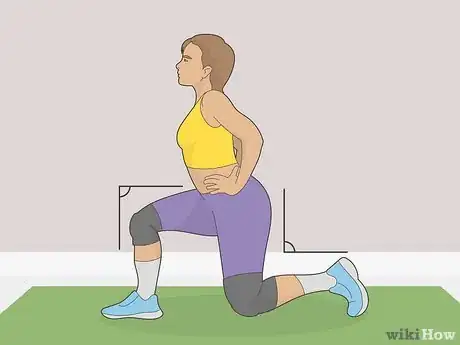
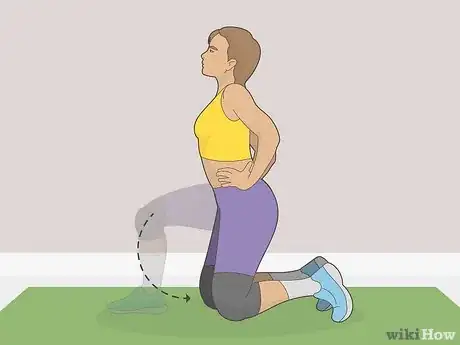
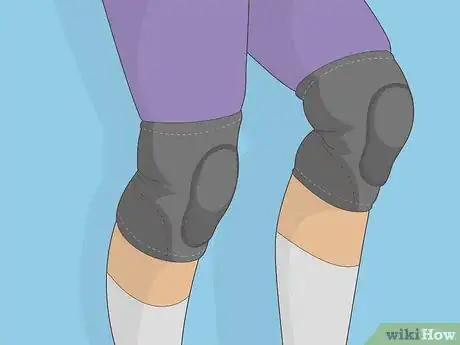

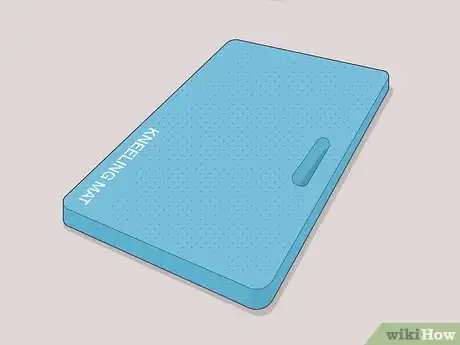

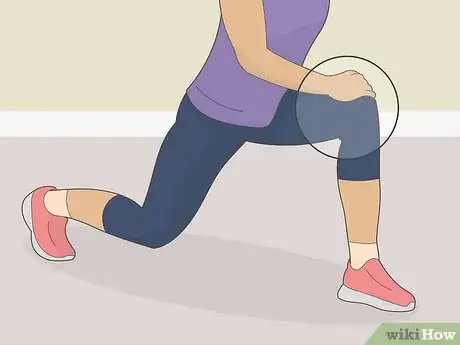
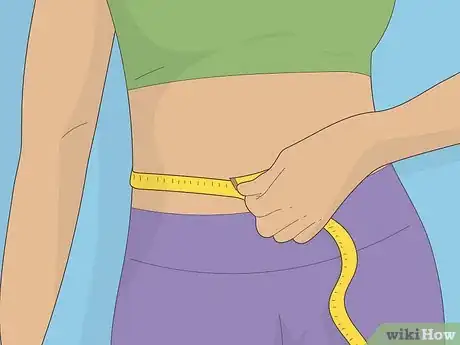
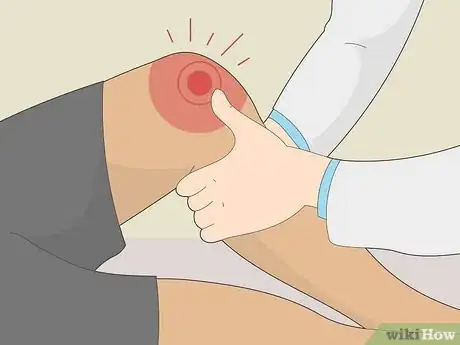



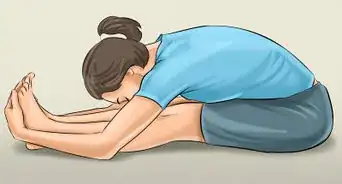





-Step-16.webp)











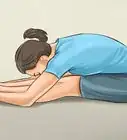



































Medical Disclaimer
The content of this article is not intended to be a substitute for professional medical advice, examination, diagnosis, or treatment. You should always contact your doctor or other qualified healthcare professional before starting, changing, or stopping any kind of health treatment.
Read More...